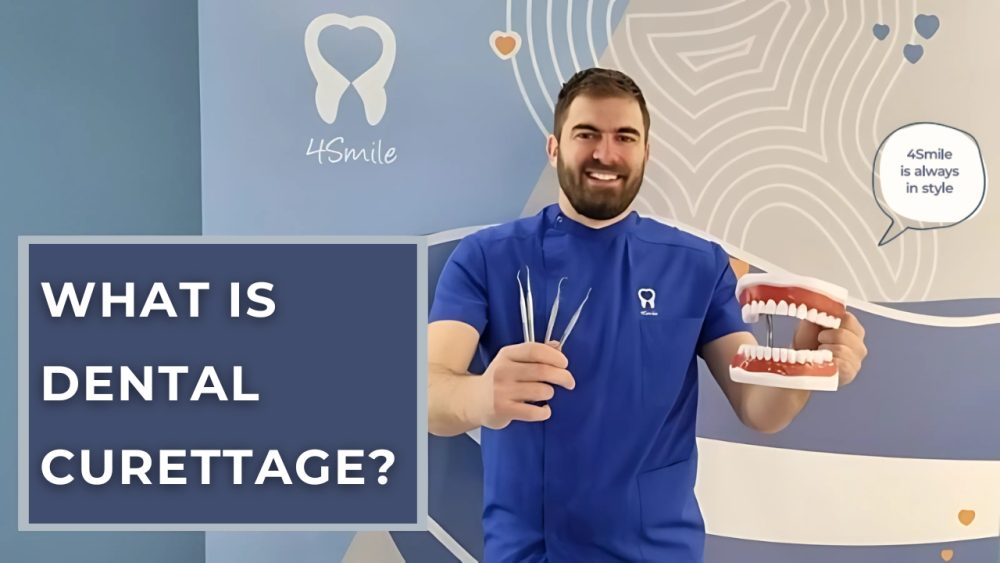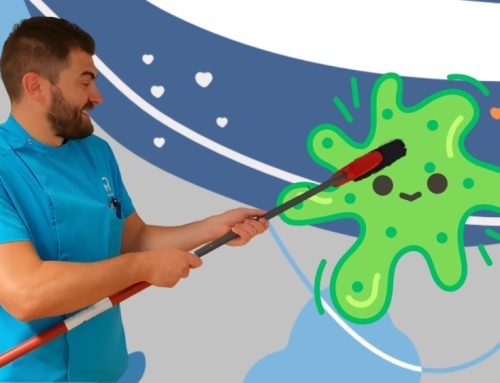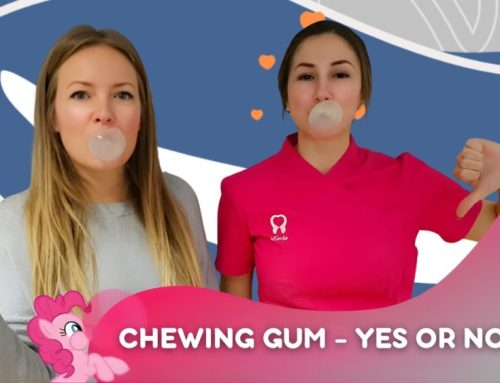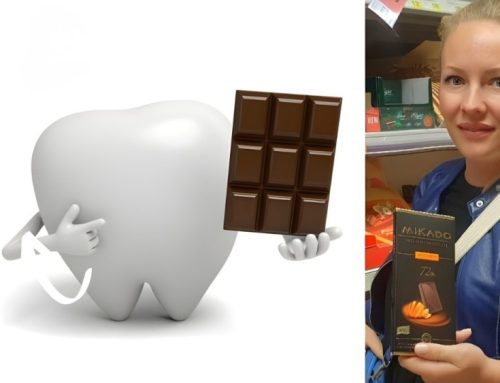Do you suffer from periodontitis and are looking for the right treatment?
If your periodontal pockets are very deep, then the best therapy for you is gingival curettage, i.e., dental curettage.
What is dental curettage – in this week’s blog from Dental Center 4Smile we explain:
- When is dental curettage necessary?
- Is dental curettage painful?
- How long does dental curettage take?
- How often is dental curettage needed?
- Advantages and disadvantages of dental curettage
What is dental curettage?
Dental curettage is a professional dental treatment performed when the gums are inflamed in order to remove tartar buildup. Gingival curettage should not be confused with traditional tartar cleaning, which is done without touching the gum area.
Dental curettage is a more intensive treatment used to correct periodontal problems and is performed below the gum line. It involves scraping the gums to remove tartar, then polishing and smoothing all the way down to the tooth root.
When is dental curettage necessary?
Gum disease is caused by the accumulation of bacterial plaque, which can be avoided by brushing your teeth two to three times a day. However, brushing alone is not enough to eliminate bacteria, since some areas of the teeth—especially near the gum line—are difficult to reach.
Because periodontal disease is often asymptomatic, it is important to visit the dentist regularly, as they can detect problems and recommend curettage. In advanced cases, such as severe gingivitis, visible symptoms may appear, including swollen and red gums.
Is dental curettage painful?
Dental curettage is a procedure aimed at removing bacterial plaque and tartar buildup. It is more invasive than traditional tartar cleaning, as it removes bacteria from beneath the gums while polishing the tooth down to the root.
Generally, it is not painful because it is performed under local anesthesia. However, once the anesthesia wears off, patients usually feel slight discomfort and sensitivity, especially in the gum area. At that point, taking a mild painkiller is sufficient.
How long does dental curettage take?
The duration depends on the extent of the damage and the amount of bacterial plaque or tartar beneath the gums. In complex cases, dentists usually divide the procedure into several sessions. In general, it is done in two sessions, which makes the treatment more comfortable and complication-free for the patient.
During the first visit, dental curettage takes about two hours, since various analyses and examinations are needed to determine the extent and complexity of the bacterial plaque.
The second visit is shorter-about an hour and a half-to treat the remaining two quadrants. After completing the treatment, based on the analysis results, the dentist usually prescribes antibiotics to fight any remaining bacteria.
How often is dental curettage needed?
After the diagnosis and treatment, periodontal maintenance check-ups are scheduled every two to three months. It is important to remember that periodontitis is likely to reappear if proper care is not taken.
These follow-up visits allow the dentist to perform maintenance treatment on teeth that need extra attention due to bacterial buildup. This way, the patient can avoid undergoing another invasive curettage procedure, making regular dental visits essential.
Advantages and disadvantages of dental curettage
Advantage
Dental curettage improves tooth stability, gum health, and sense of taste, while also helping prevent cardiovascular disease.
Disadvantage
The downside is that after treatment, once the gums are no longer swollen, the teeth may become slightly more sensitive.















